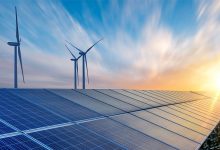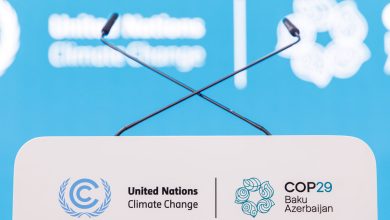PETEC 2018: State-of-the-art technologies transforming the energy life-cycle
Today, natural gas – considered an ideal partner for renewable energy generation in a future sustainable energy mix – provides one quarter of the EU’s energy demand. According to most forecasts, gas will continue to play a key role alongside renewables in helping to meet future energy requirements. In this context, technology seems to be the right ally in fighting climate change.
The role of natural gas and renewables in a fast-evolving energy market towards achieving the 2030 Agenda and the Sustainable Development Goals represents the main theme for the Power & Energy Tech Exhibition and Conference Vision 2030 – PETEC.
PETEC takes a leadership role with the introduction of a dedicated conference and exhibition that covers a range of new technologies, including Artificial Intelligence, Machine Learning, IoT, Big Data Analytics, Edge Computing, Blockchain across the energy sector.
Held under the high patronage of Romania’s Ministry of Energy in partnership with NAMR and ANRE, the conference brought together high-level officials, top executives, energy experts from across the full value chain. There has been a spate of developments involving major players on the energy market. Top power & energy business leaders have addressed commercial, regulatory, geopolitical and technical challenges impacting the future of the power and energy industry.
The event was held over two days, structured as two Panel Discussions, a Strategic Session and two Technical Sessions. Discussions and presentations held within the conference covered topical issues and occasioned exchanges of ideas and opinions in a warm and balanced atmosphere. Also, in the specially arranged space, the participants had the opportunity to talk with the exhibitors and to get informed about the products and services offered by them.
Major topics in focus were: Romania’s place on the European energy market ⁄ The Black Sea – How to capitalize on its favourable position on the regional geopolitical map ⁄ Unlocking Romania’s onshore and offshore hydrocarbon potential ⁄ Securing Europe’s future energy supply – Connecting production to markets ⁄ Electricity and gas interconnections around the Black Sea Region ⁄ Clean Energy Package challenges and opportunities ⁄ Emerging business models for a competitive market ⁄ Critical insights into Romania’s energy businesses ⁄ Regulatory framework to stimulate innovation and investment ⁄ The disruptive 3D’s impact on the energy transition to a low carbon economy ⁄ Smart solutions to maximize efficiency, reduce costs and CO2 emissions ⁄ State-of-the-art technologies transforming the energy lifecycle ⁄ Energy efficiency first – Smart toolbox for sustainable growth and communities.
Dialogue was opened by Energy Minister Anton Anton, who emphasized the role of the Black Sea, an important region that must become a major centre in the area. The official pointed out the priority directions of the National Energy Strategy, focusing on the vision of how resources are used; interconnection of national networks with the energy transmission networks of the neighbouring countries; the role of Romania as a factor of energy stability in the region. Potential opportunities to capitalize on natural gas to be extracted from the Black Sea were also highlighted. “We need investments in energy,” the minister concluded.
“We want opportunities, we want analyses as comprehensive as possible and, why not, we want to identify the best solutions to overcome the challenges faced by this sector lately, with a special focus on offshore activities in the Black Sea region, which has recently captured the attention of all energy market participants,” Iulian-Robert Tudorache, State Secretary in the Ministry of Energy, responsible for the oil and gas sector, also highlighted. “The Black Sea area is a region that brings together many interests of political, strategic, economic nature, energy security, essential energy routes for the European states, and at the same time, unfortunately it also includes, in an extended format of the Black Sea, areas of conflict. From the point of view of hydrocarbon resources, the Black Sea basin – as main pole of energy security in the region, but also as essential element of regional cooperation – gives Romania a key position,” Tudorache also mentioned, but also adding a number of specific challenges. The Black Sea presents a number of specific features, such as the presence of hydrogen sulphide, with a high potential of corrosion of pipelines and petroleum equipment, which requires special protection measures, the particularity of being almost a closed sea, with difficult access through the Bosporus, where drilling rigs must be disassembled to cross and then reassembled etc. Prospecting and research stages in deep areas have led to the discovery of new reserves, whose size is the main element of substantiation of the final investment decision, for each block held in concession. However, it is important that the substantiation of an investment decision take into account not only the commercial considerations, but also the strategic dimension and contribution to ensuring the national and regional energy security. Offshore exploitations, especially the deep ones, are essential to cover oil and gas demand in the future.
“Despite measures increasingly coherent over the past few years and progress made in terms of diversification of energy sources and supply routes, the security of gas supply is still raising real issues. This aspect is extremely important especially in the case of South-East European states, which are still facing vulnerabilities specific to over-reliance on a single supplier. Therefore, actively promoting energy cooperation between states, attracting investments and encouraging innovation in the gas sector by using the new technologies are essential and are aimed at contributing in the long run to ensuring energy security,” the State Secretary pointed out.
Key takeaways
- Strengthening regional and global cooperation is the only way to transform the wider Black Sea region from a region of confrontation into a bridge between peoples and cultures. Romania considers cooperation between riparian countries as the optimal solution for confidence building in the wider Black Sea region.
- Romania wants its status as a strategic region and aims at integrating the national market into the European energy market.
- Gas extracted from the Black Sea should be used in the re-industrialization process, not as raw material.
- Investment interest should focus on retrofitting, upgrading existing capacities and developing new interconnection capacities at regional level.
- Essential condition for encouraging investors: providing a stable, predictable, favourable and transparent framework from a technical, economic, commercial, legal, social and environmental point of view.
- The National Energy Strategy focuses on: the vision of how resources are being exploited; integration with neighbouring transmission networks; the role of Romania as a factor of stability in the region.
- The future of energy systems will be under the footprint of the 3D – decentralization, decarbonisation, digitization.
- Adoption of state-of-the-art technologies is essential for the transition to a low carbon economy in the information age. Under the principle of technological neutrality, the technology that best suits is becoming a priority.
Supporting sponsors, partners and organizations: ROMGAZ; INCDT COMOTI; ASSECO GROUP; TRANSELECTRICA; ATLAS COPCO RENTAL; FPPG; TMK-ARTROM; DOSCO PETROSERVICES; ROXTEC ROMANIA; ENERIA; STEDER GROUP; DELOITTE; ACFR; ACUE; AFEER; AGIR; ARPEE; CCIB; EPG; PETROLEUM CLUB OF ROMANIA; PETROLEUM-GAS UNIVERSITY; ROPEPCA; RPIA; RWEA; THE DIPLOMAT BUCHAREST
Photo gallery: https://photos.app.goo.gl/qBsY5VuYkz8VAUGa7







